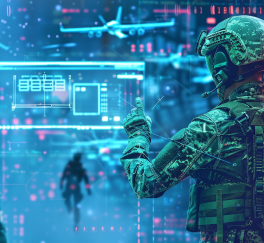Using MLOps to Deploy ML Models
MLOps encompasses the best practices, tools, and processes required to deploy and maintain ML models in production environments effectively. In military applications, where the stakes are high and conditions are demanding, the principles of MLOps are invaluable. Here's a breakdown of how MLOps principles align with the unique requirements of military deployments:
-
Tracking: Proper tracking of ML models' provenance is essential for deploying reliable and auditable software. In military operations, where accountability and traceability are crucial, tracking the origin and evolution of ML models ensure mission-critical decisions are based on accurate and up-to-date intelligence.
-
Automation & DevOps: Automation is key to streamlining the deployment process of ML models in military environments. By adopting DevOps principles and automating tasks such as model training, retraining, and deployment, military organizations can ensure agility and efficiency in adapting to changing operational requirements.
-
Monitoring/Observability: ML models deployed in military settings must be continuously monitored for data quality, performance, and security. Observability tools enable military personnel to detect anomalies, data drift, or model degradation in real-time, ensuring the reliability and effectiveness of deployed models.
-
Reliability: Ensuring the reliability of ML applications in rugged military environments requires rigorous testing, security measures, and resilience to failures. By implementing robust reliability practices, military organizations can trust that their deployed models will perform as expected, even in challenging conditions.

Deploying ML Models with Rugged Technology
Rugged computing companies play a vital role in enabling the deployment of ML models in military operations. Here are some key features and considerations for deploying ML models with rugged technology:
-
Model Registry: A centralized model registry enables military organizations to track and manage ML models throughout their lifecycle, from development to deployment.
-
Version Control: Implementing version control systems ensures that all changes to ML models are tracked and auditable, facilitating reproducibility and accountability.
-
Continuous Integration/Continuous Deployment (CI/CD): Automating the build, testing, and deployment of ML models through CI/CD pipelines accelerates the deployment process and reduces the risk of errors.
-
Automated Retraining: Automation of model retraining ensures that deployed models remain up-to-date and relevant, incorporating new data and insights seamlessly.
-
Real-time Monitoring: Rugged computing solutions equipped with advanced monitoring capabilities enable military personnel to monitor the performance and health of deployed ML models in real-time, facilitating proactive maintenance and troubleshooting.
-
Data Drift Detection: Automated tools for detecting data drift and model degradation enable military organizations to maintain the accuracy and effectiveness of deployed models over time, even in dynamic operational environments.
-
Resilient Hardware: Rugged computing devices are designed to withstand harsh environmental conditions, ensuring the reliability and durability of deployed ML solutions in military deployments.
-
Security Measures: Robust security features integrated into rugged technology protect sensitive data and communications, mitigating risks associated with cyber threats and unauthorized access.
The effective deployment of ML models in military operations requires a combination of robust MLOps practices and rugged computing technology. By leveraging the principles of MLOps and harnessing the capabilities of rugged technology, military organizations can deploy and maintain ML models with confidence, empowering them with real-time intelligence and decision-making capabilities in the most demanding operational environments.











